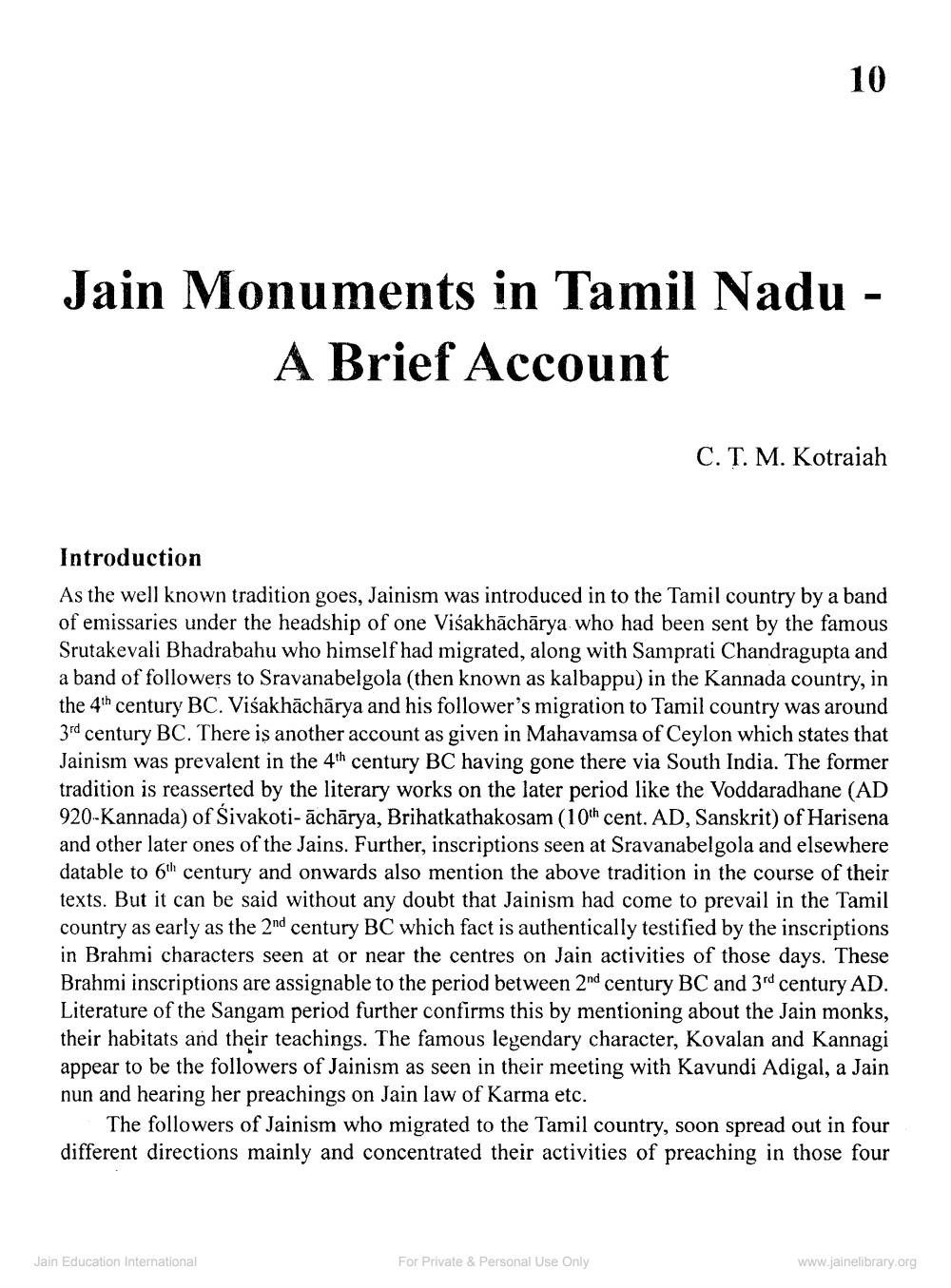________________
Jain Monuments in Tamil Nadu -
A Brief Account
C. T. M. Kotraiah
Introduction
As the well known tradition goes, Jainism was introduced in to the Tamil country by a band of emissaries under the headship of one Visakhāchārya who had been sent by the famous Srutakevali Bhadrabahu who himself had migrated, along with Samprati Chandragupta and a band of followers to Sravanabelgola (then known as kalbappu) in the Kannada country, in the 4th century BC. Visakhāchārya and his follower's migration to Tamil country was around 3rd century BC. There is another account as given in Mahavamsa of Ceylon which states that Jainism was prevalent in the 4th century BC having gone there via South India. The former
adition is reasserted by the literary works on the later period like the Voddaradhane (AD 920-Kannada) of Sivakoti-āchārya, Brihatkathakosam (10th cent. AD, Sanskrit) of Harisena and other later ones of the Jains. Further, inscriptions seen at Sravanabelgola and elsewhere datable to 6th century and onwards also mention the above tradition in the course of their texts. But it can be said without any doubt that Jainism had come to prevail in the Tamil country as early as the 2nd century BC which fact is authentically testified by the inscriptions in Brahmi characters seen at or near the centres on Jain activities of those days. These Brahmi inscriptions are assignable to the period between 2nd century BC and 3rd century AD. Literature of the Sangam period further confirms this by mentioning about the Jain monks, their habitats and their teachings. The famous legendary character, Kovalan and Kannagi appear to be the followers of Jainism as seen in their meeting with Kavundi Adigal, a Jain nun and hearing her preachings on Jain law of Karma etc.
The followers of Jainism who migrated to the Tamil country, soon spread out in four different directions mainly and concentrated their activities of preaching in those four
Jain Education International
For Private & Personal Use Only
www.jainelibrary.org




